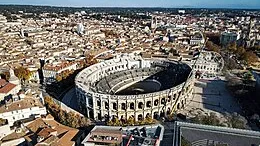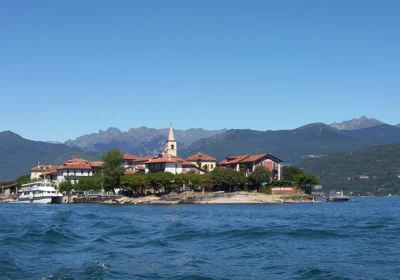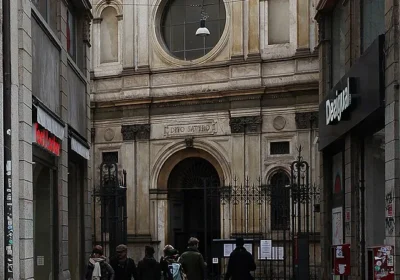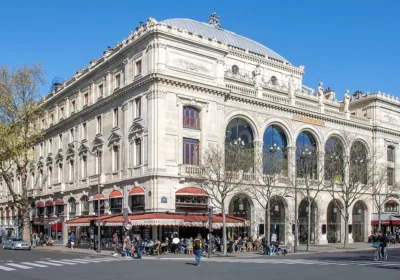In the 4th – 3rd centuries B.C., the area was inhabited by Gaulish (Celtic) tribes, who submitted to the Romans in 121 B.C. Emperor Augustus founded a new city on the site of the Celtic settlement. The name of the deity worshipped by the local Celtic tribe, the Volci, was taken by the Romans as “Nemaus”, which was later shortened to “Nemus” and then to “Nim”.
The old deity was also honored by the conquerors, who erected here many altars dedicated to both the gods of Rome and the gods of the conquered peoples. Thanks to its favorable location in the wine-growing region and the privileges granted by the emperors, Nîmes became one of the largest cities in Southern France.
The city has preserved many monuments of the Roman era – it is often called the French Rome. Roman arenas, built 2000 years ago for gladiatorial fights and festivities, have been preserved here. These arenas are one of the best preserved ancient amphitheaters in the world. It has a seating capacity of up to 23,000 spectators. The elliptical shape and arrangement of rows provide excellent visibility of the arena from any place. In the Middle Ages, the amphitheater was used as a fortress and in times of danger served as a refuge for the population. The Viscounts of Nîmes, who governed the city, built a castle here, and then fortified dwellings, two chapels, and a water supply system were built from the same stones. In the XIX century. all residential buildings inside were demolished, and the amphitheater acquired its original appearance. Nowadays it hosts concerts, festivals, sports competitions and annual feria – bullfights (unlike Spanish bullfighting, bulls are not killed).
Many other ancient buildings have been preserved.
Temple Maison Caree (“Square House”, late I century BC) – an elegant temple of the ancient forum, dedicated to the grandsons of Augustus, – a true miracle of Greco-Roman architecture. It served as a meeting place for the consuls. The Church of the Madeleine in Rome was built in its image.
Augustus Gate (I century BC) – once the entrance to Nîmes – allowed passage through the fortress walls and moat that protected the city from attacks.
At the top of the Cavalier hill stands the Tour-Magne tower, also built in the 1st century B.C. This tower is part of the fortress walls that once surrounded the city. A panorama showing what Nîmes was like in Roman times has recently been installed here. At the foot of the hill is the “Garden of Fountains” (Jardins de la Fontaine 1745-1755), built in the likeness of Versailles. It is a garden of the Age of Enlightenment, an era of nostalgia for ancient times. Here is the famous spring of Nemausus, the water deity and guardian of the city for two millennia. The Temple of Diana, the ruins of an ancient sanctuary, stands near the spring. Not far from the garden is a unique monument of Roman culture – the Castellum reservoir – evidence of the Roman water supply network, which supplied the city with spring water.
There are many museums in Nîmes.
The Museum of Old Nîmes is located in the Bishop’s Palace and exhibits collections of old furniture, clothing, utensils, etc. Magnificent shawls made from old patterns are sold here.
The Museum of Fine Arts displays: mosaic panels from the Gallo-Roman era, as well as French, Italian, Flemish and Dutch paintings from the XV-XIX centuries.
You can also visit the Archaeological Museum, the Museum of Modern Art, the Zoological Museum, and the Museum of Natural History.
Walking around the city, it will be interesting to walk along the Rue des Marchands, Place des Herbes and Place de I’Horloge, where French writer Alphonse Daudet was born.

















